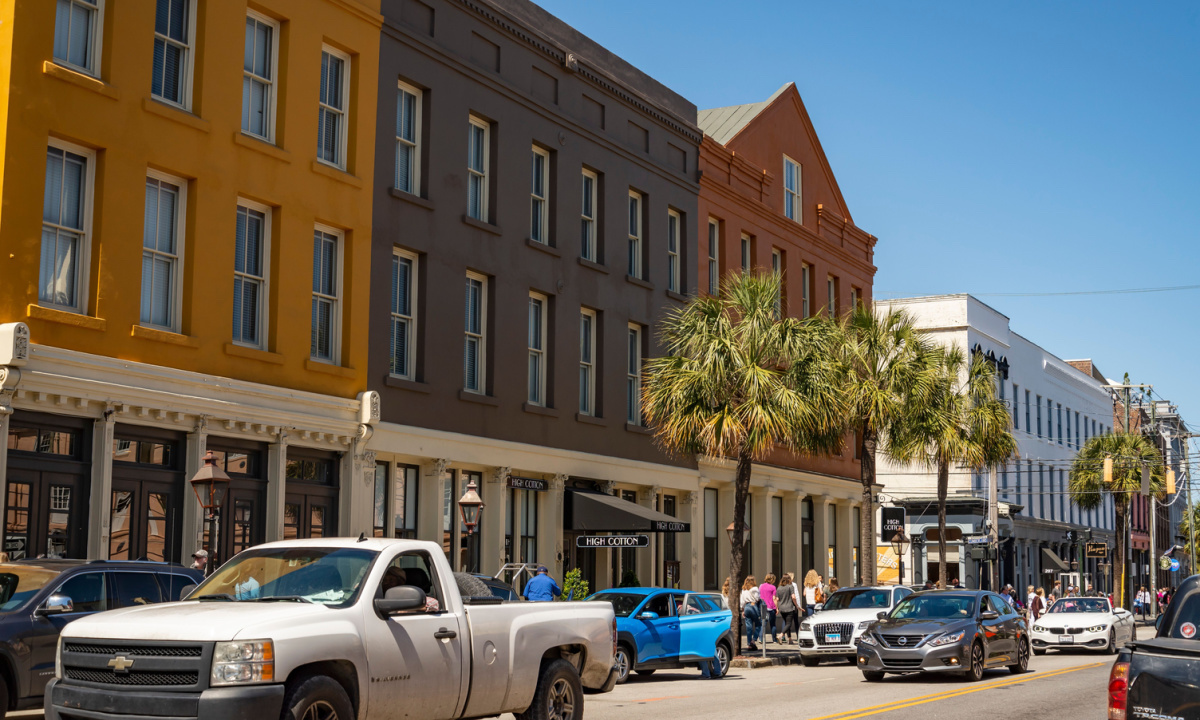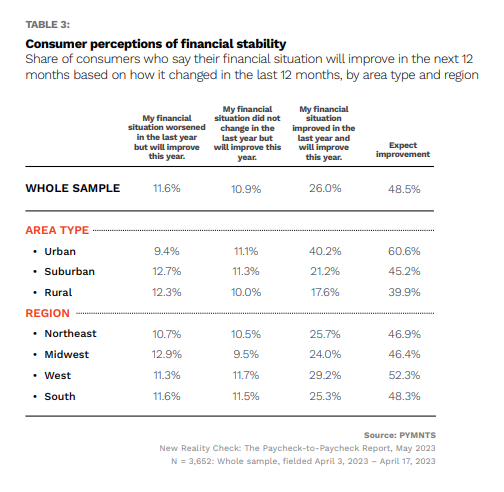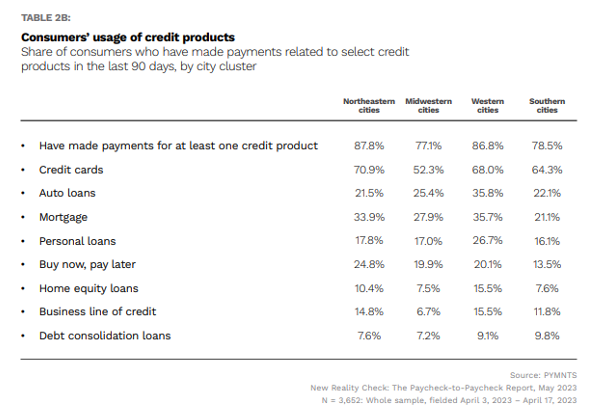
The U.S. economy may seem a monolith — a $23 trillion juggernaut.
But dig a little deeper, and patterns emerge — trends that determine where some industries, states and by extension, communities and families, are doing better than others.

Recent PYMNTS data estimate that roughly 60% of U.S. consumers live paycheck to paycheck, where the monthly income is barely enough to cover the monthly nut. And, last month, as spotlighted in joint research between PYMNTS and LendingClub, we noted that 7 in 10 urban consumers live paycheck to paycheck.
Beyond the city/rural divide, there are some differences that can be laid out that show pockets of relative economic well-being that are concentrated in U.S. regions. And it may be the case that the South is proving to be a haven of optimism in the paycheck-to-paycheck economy.
Connecting some data dots make the case. To that end, and as reported by Bloomberg, six “fast-growing states in the South”— Florida, the Carolinas, Texas, Georgia and Tennessee — are contributing more to U.S. GDP than the Northeast. That’s due in part to the fact that there has been some migration, where people settling in those states during the pandemic brought an incremental $100 billion in income to those states in 2020 and 2021 alone, while the Northeast lost $60 billion over that timeframe. That data comes from the Internal Revenue Service.
Importantly, the data also show that the Southern region has been responsible for two-thirds of job growth seen in the entire country.

The robust job growth may be spurring some optimism in the south — because, we note, a rosy employment picture tends to make us feel sanguine about the ability to 1) earn a steady living, which translates into some financial security; and 2) change jobs with minimal friction if we so desire. The chart above shows that roughly half of southerners expect to see improvement in their financial situation in the next 12 months. A quarter of respondents from the region say that their financial situation improved in the past year, so it’s likely that past experience is setting up future expectations.
We found that about 60.5% of consumers in the South live paycheck to paycheck, which trails the 64% in the West and the more than 61% in the Midwest, and is bested only slightly by the roughly 59% in the Northeast. But 61% of urban consumers living in the South live paycheck to paycheck, which is far better than the roughly 70% tally nationwide.
All of this is translating into reasonably healthy consumer spending in the South. The accompanying chart shows that about 78% of the population there has been using credit to pay for goods and services, with the use of credit cards topping the list.